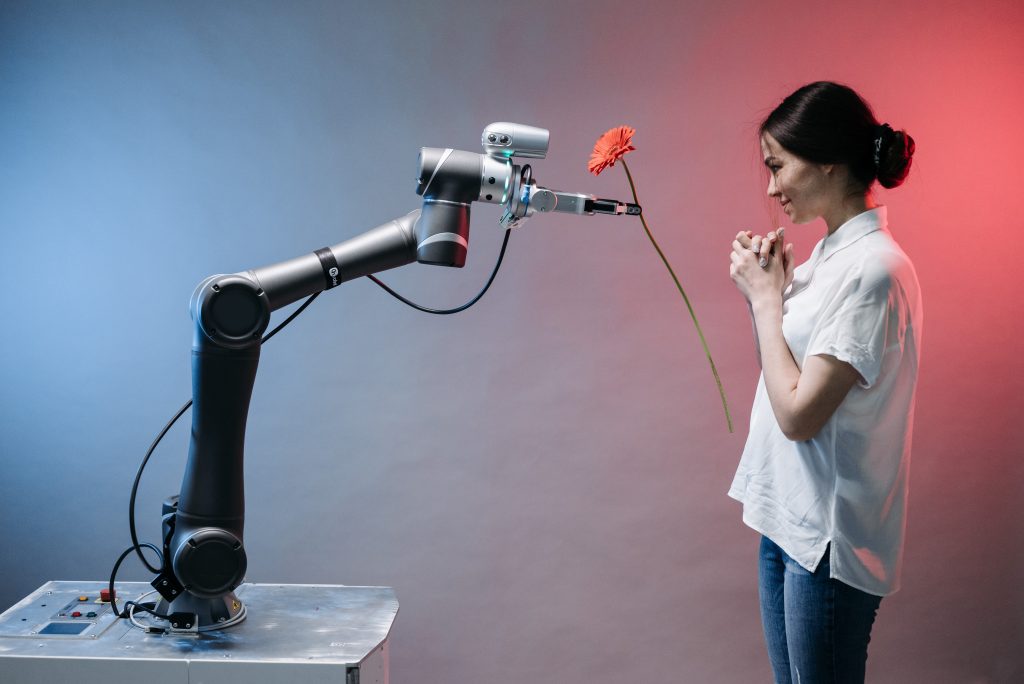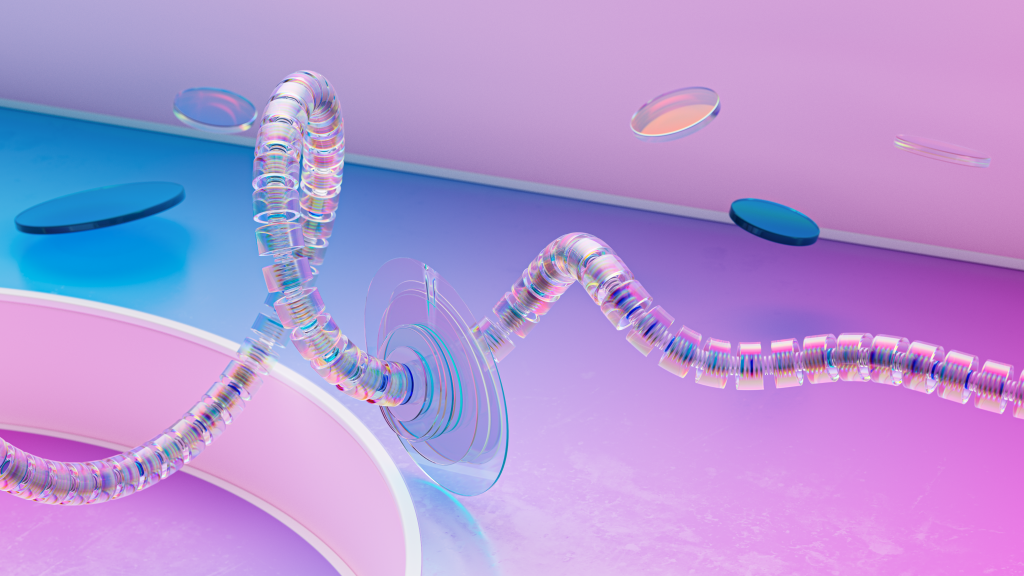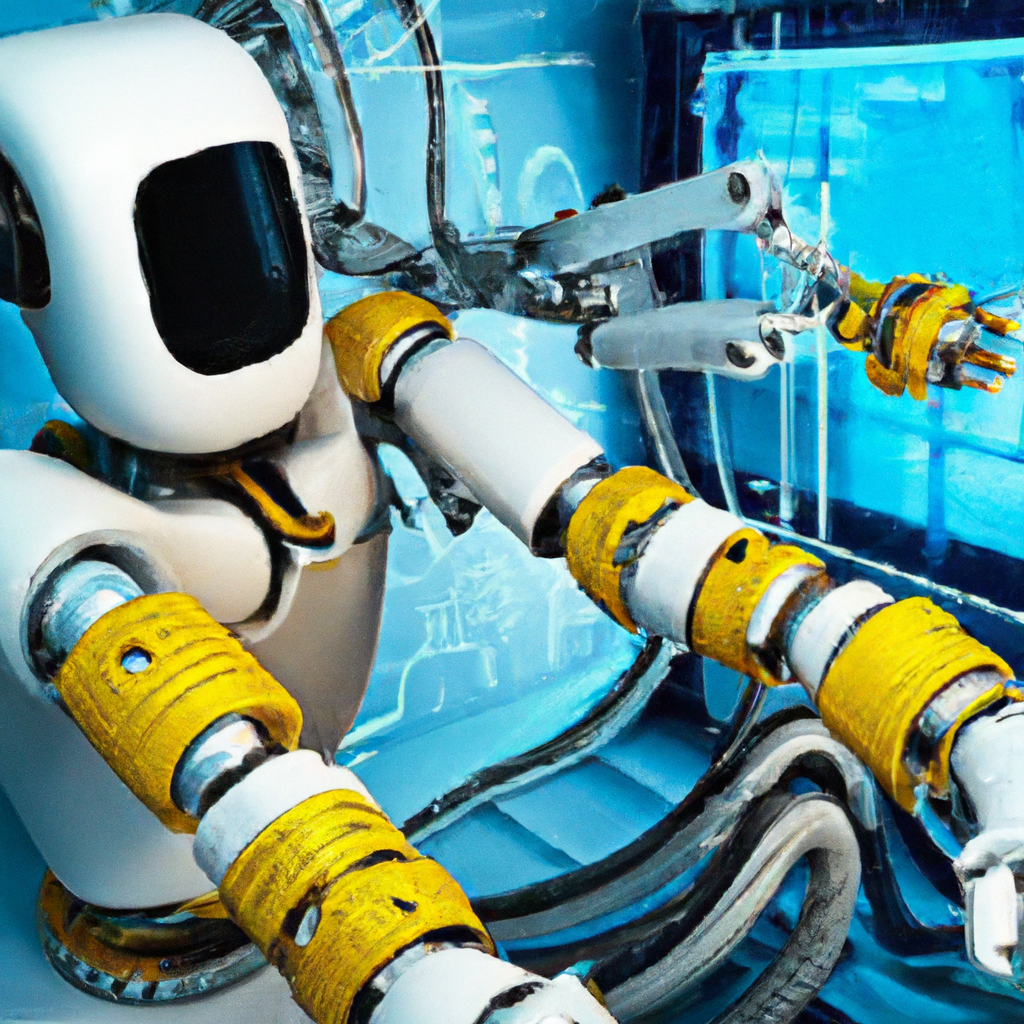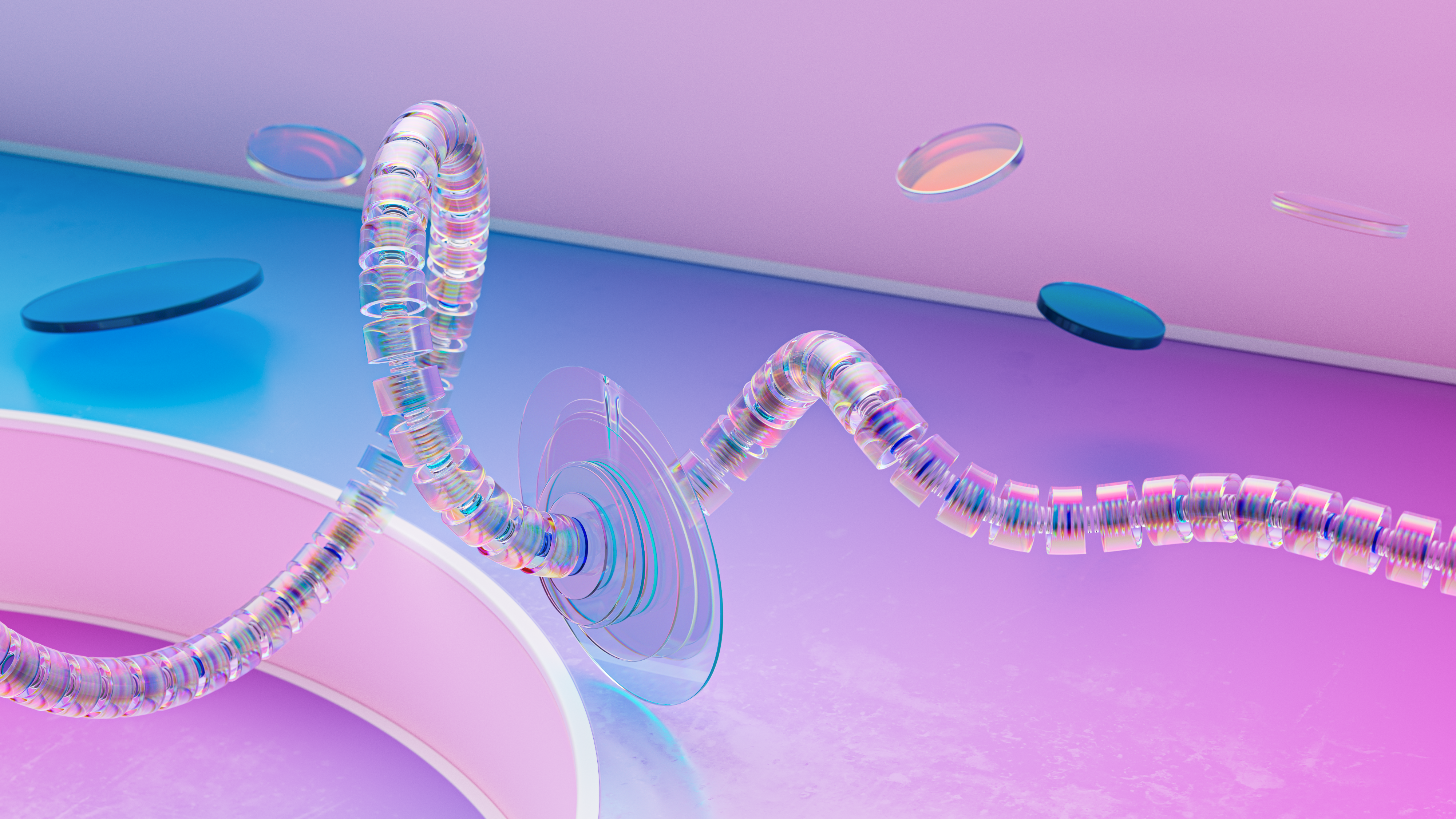So, you’ve probably heard the term “robotics” thrown around quite a bit lately, but have you ever wondered what it actually means? Well, robotics is the fascinating field that explores the design, development, and use of robots. These sophisticated machines are programmed to perform tasks, either autonomously or under human control, with the aim of enhancing our lives and increasing efficiency in various industries. From self-driving cars to robotic surgery, robotics has set the stage for a future where intelligent machines work alongside us, revolutionizing the way we live and work. Intrigued? Let’s dive into the world of robotics and discover the incredible possibilities it holds! Robotics is a vast and fascinating field that combines various branches of science and engineering to design, construct, and operate robots. These machines, known as robots, are programmable devices that carry out tasks automatically or with minimal human intervention. they can be used to perform a wide range of functions, from assembly line operations in manufacturing to complex surgeries in healthcare. Robotics has become an increasingly important field in recent years, with advancements in technology and the increasing demand for automation in various industries.
Origins of the Term
The term “robotics” was coined by Isaac Asimov, a renowned science fiction author, in his 1942 short story “Runaround”. Asimov used the word to describe autonomous machines that could perform tasks and interact with humans. Since then, the term has gained popularity and is now used to describe the field of study and practice concerning robots and their applications.
Meaning and Scope
Robotics encompasses a wide range of disciplines, including mechanical engineering, electrical engineering, computer science, and artificial intelligence. It involves the design, development, programming, and control of robots. The scope of robotics is constantly expanding, as new technologies and innovations emerge. Today, robotics has applications in areas such as manufacturing, healthcare, exploration, agriculture, military and defense, transportation, education, and research.
Interdisciplinary Field
Robotics is a highly interdisciplinary field that brings together various branches of science and engineering. Mechanical engineering plays a crucial role in designing and building the physical structures of robots, including their bodies, manipulators, and end effectors. Electrical engineering focuses on the electrical systems and components of robots, such as motors, actuators, and power sources. Computer science and artificial intelligence are essential for programming robots and enabling them to perform tasks autonomously or with human assistance.
History of Robotics
Early Concepts and Automata
The history of robotics can be traced back to ancient times when humans first started exploring the concept of creating mechanical beings. Early inventors, such as Archytas of Tarentum and Hero of Alexandria, developed automata that were powered by air or water pressure. These machines could perform simple tasks, such as opening doors and playing music. However, it wasn’t until the 20th century that significant advancements in robotics occurred.
Industrial Revolution and Automation
The industrial revolution played a significant role in the development of robotics. The introduction of steam power and the mechanization of production processes led to the birth of automation. In the late 18th and early 19th centuries, inventors like Richard Arkwright and Eli Whitney developed machines that could perform tasks previously done by hand. These early forms of automation laid the foundation for future advancements in robotics.
Development of Modern Robotics
The development of modern robotics began in the mid-20th century with the invention of the first industrial robot by George Devol and Joseph Engelberger. In 1954, they created the Unimate, a robotic arm that could perform repetitive tasks on an assembly line. This invention revolutionized the manufacturing industry, leading to increased productivity and efficiency. Since then, robotics has continued to evolve, with advancements in areas such as sensor technology, artificial intelligence, and control systems.
Applications of Robotics
Manufacturing
One of the most significant applications of robotics is in the field of manufacturing. Industrial robots are widely used in factories and assembly lines to perform repetitive tasks with precision and speed. These robots can handle tasks such as welding, painting, assembly, and packaging, reducing the need for human labor and improving production efficiency.
Healthcare
Robotics has made significant contributions to the field of healthcare. Medical robots are used in surgical procedures to assist surgeons and provide more precise and minimally invasive treatments. Robotic surgical systems, such as the da Vinci Surgical System, allow surgeons to perform complex procedures with enhanced dexterity and accuracy. Additionally, robots are used for patient care, rehabilitation, and the delivery of medication in healthcare settings.
Exploration and Space
Robots play a crucial role in space exploration, where human presence is often limited or impossible. Robotic spacecraft, such as the Mars rovers, are used to explore the surface of other planets and gather scientific data. These robots are equipped with various sensors and instruments that allow them to navigate and collect samples. Additionally, robots are used for tasks such as satellite servicing and maintenance, reducing the risk and cost associated with human space missions.
Agriculture
Robotics is transforming the agricultural industry by providing automation solutions for farming operations. Agricultural robots, also known as agribots, are used for tasks such as planting, harvesting, and monitoring crops. These robots can operate autonomously or with remote control, allowing farmers to increase productivity and optimize resource utilization. Agribots also help address labor shortages in the agricultural sector, ensuring efficient and sustainable food production.
Military and Defense
The military and defense sector has embraced robotics for a variety of applications. Military robots are used for tasks such as reconnaissance, surveillance, bomb disposal, and mine clearing. These robots can operate in hazardous environments, reducing the risk to human personnel. Drones, another form of military robotics, are extensively used for aerial surveillance and strike operations. Robotic technologies are continually advancing in the defense industry, enabling more effective and efficient missions.
Transportation
Robotics has the potential to revolutionize the transportation industry. Autonomous vehicles, such as self-driving cars and trucks, are being developed and tested by major automotive companies. These vehicles use a combination of sensors, artificial intelligence, and control systems to navigate and interact with the environment. Autonomous transportation has the potential to enhance road safety, reduce traffic congestion, and improve the overall efficiency of the transportation system.
Education and Research
Robotics has become an integral part of education and research. Robotics programs in schools and universities aim to inspire and educate the next generation of engineers and innovators. Students learn to design, build, and program robots, developing problem-solving and critical-thinking skills. Robotics research focuses on advancing technologies and addressing complex challenges in areas such as human-robot interaction, artificial intelligence, and autonomous systems.

Types of Robots
Industrial Robots
Industrial robots are designed for manufacturing and industrial applications. They are typically used for tasks such as assembly, welding, painting, and material handling. Industrial robots are often equipped with multiple axes of motion, allowing them to operate with a high degree of precision and maneuverability.
Service Robots
Service robots are designed to assist humans in various settings, such as homes, hospitals, and offices. These robots can perform tasks such as cleaning, cooking, and personal assistance. Service robots aim to improve the quality of life and provide support to individuals who may require assistance.
Collaborative Robots
Collaborative robots, also known as cobots, are designed to work alongside humans in a collaborative manner. These robots are equipped with sensors and safety features that allow them to operate safely in proximity to humans. Collaborative robots are often used in manufacturing and healthcare settings, where they can assist human workers in tasks that require strength or precision.
Mobile Robots
Mobile robots are designed to move autonomously in various environments. They can be ground-based, such as autonomous vehicles and delivery robots, or aerial-based, such as drones. Mobile robots use sensors, navigation systems, and control algorithms to perceive and navigate the world around them.
Medical Robots
Medical robots are used in healthcare settings to assist surgeons in surgical procedures or provide patient care. Robotic surgical systems, such as the da Vinci Surgical System, enable surgeons to perform complex procedures with enhanced precision and control. Medical robots can also be used for tasks such as diagnostics, rehabilitation, and drug delivery.
Aerial Robots
Aerial robots, commonly known as drones, are unmanned aircraft that can fly autonomously or be remotely controlled. Drones are used for a wide range of applications, including aerial photography, surveillance, search and rescue, package delivery, and agriculture. They are equipped with various sensors and cameras to navigate and collect data from the environment.
Underwater Robots
Underwater robots, also known as autonomous underwater vehicles (AUVs) or remotely operated vehicles (ROVs), are used for exploration and research in underwater environments. These robots are equipped with sonar systems, cameras, and manipulators to navigate and manipulate objects underwater. Underwater robots play a crucial role in underwater archaeology, marine biology, offshore oil and gas exploration, and environmental monitoring.
Space Robots
Space robots are used for exploration, maintenance, and repair tasks in outer space. These robots are designed to withstand the harsh conditions of space and are equipped with various sensors and instruments to perform their tasks. Space robots, such as the Mars rovers, allow scientists to gather data and study celestial bodies that would otherwise be difficult to access.
Humanoid Robots
Humanoid robots are designed to resemble the human body and mimic human movements. These robots are often used for research in areas such as artificial intelligence, human-robot interaction, and social robotics. Humanoid robots can perform tasks such as walking, talking, and gesturing, making them suitable for applications such as entertainment, education, and healthcare.
Nano Robots
Nano robots, also known as nanobots, are miniature robots that operate at the nanoscale. These robots are typically built from nanoscale components, such as nanoparticles or nanowires, and are used for tasks such as targeted drug delivery, disease diagnosis, and nanoscale assembly. Nano robots have the potential to revolutionize medicine by enabling precise and targeted treatments at the cellular level.
Components of a Robot
Manipulators and End Effectors
The manipulator is the mechanical arm or limb of a robot that performs various tasks. It consists of a series of joints and links that allow the robot to move and manipulate objects. The end effector is the tool or device attached to the manipulator, which interacts with the environment or performs specific tasks. Examples of end effectors include grippers, welding torches, and surgical instruments.
Actuators
Actuators are the components of a robot that convert electrical signals into mechanical motion. They are responsible for moving and controlling the robot’s joints, allowing it to perform tasks and interact with the environment. Actuators can take the form of electric motors, hydraulic systems, or pneumatic systems, depending on the specific application and requirements of the robot.
Sensors
Sensors are critical components of a robot that provide it with the ability to perceive and interact with its environment. They gather data about the robot’s surroundings, such as distance, temperature, pressure, and light intensity. Common types of sensors used in robotics include cameras, proximity sensors, force sensors, and inertial sensors. These sensors enable the robot to navigate, detect objects, and make decisions based on the gathered information.
Control Systems
Control systems are responsible for operating and controlling the movements and actions of a robot. They receive inputs from sensors and generate outputs that control the actuators. Control systems can be purely embedded in the robot or can be remotely controlled by an operator. They use algorithms and programming to process sensor data and make decisions, enabling the robot to perform its intended tasks.
Power Sources
Power sources provide the energy required to operate a robot. Depending on the size and application of the robot, power sources can range from batteries and fuel cells to electrical outlets and hydraulic systems. The choice of power source depends on factors such as the robot’s mobility requirements, operational duration, and power consumption.
Programming and Software
Programming and software are essential aspects of robotics. They allow the robot to perform specific tasks and operate autonomously or with human assistance. Robot programming involves writing code that defines the robot’s behavior and actions. Software systems enable the robot to process sensor data, make decisions, and execute commands. Programming and software play a crucial role in enabling the robot to adapt to different environments and perform complex tasks.
Perception Systems
Perception systems provide robots with the ability to interpret and understand the environment. These systems use sensors and algorithms to analyze sensory data and extract meaningful information. Perception systems can include computer vision algorithms for image and video processing, machine learning algorithms for pattern recognition, and sensor fusion techniques for integrating multiple sensor inputs. Perception systems enable robots to navigate, detect objects, and interact with the environment effectively.

Advancements in Robotics
Artificial Intelligence
Artificial intelligence (AI) has played a significant role in advancing robotics. AI enables robots to learn from experience, adapt to changing conditions, and make decisions based on data. Machine learning algorithms, a subset of AI, allow robots to improve their performance over time and optimize their actions. AI and machine learning have enabled breakthroughs in areas such as computer vision, natural language processing, and autonomous navigation.
Machine Learning
Machine learning is a subfield of AI that focuses on the development of algorithms that allow robots to learn from data and improve their performance without explicit programming. Machine learning algorithms enable robots to recognize patterns, make predictions, and adapt to new situations. They have been successfully applied in various robotic applications, such as object recognition, speech recognition, and autonomous navigation.
Robot Swarms
Robot swarms refer to a collection of robots that work together in a coordinated manner to accomplish tasks. These swarms can consist of large numbers of simple robots or a smaller number of more complex robots. Robot swarms have the potential to improve efficiency, robustness, and scalability in tasks such as search and rescue, exploration, and environmental monitoring.
Soft Robotics
Soft robotics is an emerging field that focuses on the development of robots with soft, flexible structures and materials. Soft robots are inspired by natural organisms, such as worms, octopuses, and plants. They offer advantages in terms of adaptability, safety, and human interaction. Soft robots have applications in areas such as medical devices, human-robot interaction, and gripping and manipulation in unstructured environments.
Bio-inspired Robotics
Bio-inspired robotics draws inspiration from nature to design robots and systems. By emulating the principles and mechanisms found in living organisms, bio-inspired robots can achieve improved performance and efficiency. Examples of bio-inspired robotics include robots modeled after insects, birds, and fish, which possess unique capabilities such as flying, jumping, or underwater navigation.
Human-Robot Interaction
Human-robot interaction (HRI) focuses on the study of how humans and robots can interact effectively and safely. HRI aims to develop technologies and interfaces that facilitate natural and intuitive communication between humans and robots. This includes areas such as speech recognition, gesture recognition, facial recognition, and non-verbal communication. Human-robot interaction is essential for the successful integration of robots into various domains, such as healthcare, education, and entertainment.
Autonomous Systems
Autonomous systems refer to robots and machines that can operate and make decisions without direct human intervention. These systems use sensors, AI algorithms, and control systems to perceive and understand the environment and perform tasks autonomously. Autonomous systems are transforming various industries, including transportation, manufacturing, and agriculture, by reducing human error, improving efficiency, and enabling new applications.
Benefits and Challenges
Benefits of Robotics
Robotics offers numerous benefits across various industries and applications. In manufacturing, robots can increase productivity, improve quality control, and reduce production costs. In healthcare, robots can enable minimally invasive surgeries, improve patient care, and assist in rehabilitation. In agriculture, robots can optimize resource utilization, automate labor-intensive tasks, and increase crop yields. Overall, robotics provides opportunities for increased efficiency, precision, safety, and innovation in many sectors.
Challenges in Robotics
Despite the many advantages of robotics, there are also significant challenges that need to be addressed. One of the challenges is the high cost of implementing robotic systems, which can limit their accessibility, particularly for small businesses or developing countries. Another challenge is the complexity of integrating robots into existing workflows and processes, requiring specialized skills and expertise. Additionally, ethical considerations such as privacy, job displacement, and the impact on human workers need to be carefully considered when deploying robots in various domains.
Ethical Considerations
The widespread adoption of robotics raises important ethical considerations that need to be addressed. One key concern is the impact of automation on employment and the workforce. As robots take over repetitive and labor-intensive tasks, there is a potential for job displacement and unemployment. It is crucial to ensure that the benefits of automation are equitably distributed and that workers are adequately reskilled and supported in the transition.
Ethical considerations also include issues of privacy and data security. Robots and automation systems often collect and process large amounts of data, raising concerns about the privacy and security of personal information. Clear regulations and guidelines need to be established to protect individuals’ privacy rights and prevent misuse of data.
Furthermore, the development and deployment of autonomous robots raise questions about liability and accountability. In cases where robots cause harm or make decisions that have unintended consequences, it is important to define responsibility and establish frameworks for legal and ethical accountability.

Future of Robotics
Integration with AI and IoT
The future of robotics lies in the integration with other emerging technologies, such as artificial intelligence (AI) and the internet of things (IoT). AI will enable robots to have more advanced learning capabilities, adaptability, and decision-making abilities. IoT will allow robots to be connected to networks and exchange data with other devices, enabling seamless communication and coordination. The combination of robotics, AI, and IoT will result in smart and interconnected systems that can revolutionize various domains and industries.
Expanding Fields of Application
As technology continues to advance, the fields of application for robotics are expected to expand. Robotics will find new applications in areas such as disaster response, environmental monitoring, personal assistance, and entertainment. The use of drones for delivery services and aerial surveillance is likely to become more widespread. Additionally, the integration of robotics in smart homes and cities will provide opportunities for automation and enhanced quality of life.
Impact on the Workforce
The increased use of robotics and automation is expected to have a significant impact on the workforce. While robots can perform tasks more efficiently and accurately than humans, they also have the potential to displace some jobs. This shift in the labor market will require a focus on reskilling and upskilling the workforce to adapt to new roles and industries. Collaborative robotics, which involve humans working alongside robots, is one approach to mitigate job displacement and create new opportunities for employment.
Ethical and Legal Implications
As robotics continues to evolve and become more embedded in everyday life, there will be a need for clear ethical and legal frameworks to govern their use. Issues such as privacy, data security, liability, and accountability will require careful consideration. Regulatory bodies and policymakers will play a crucial role in ensuring the responsible development and deployment of robotics technologies. Open dialogue and collaboration among stakeholders will be essential to address these ethical and legal challenges effectively.
Major Robotics Companies
Boston Dynamics
Boston Dynamics is a well-known robotics company that specializes in the development of advanced robots with mobility and dexterity capabilities. The company has gained recognition for its humanoid robot, Atlas, and its quadruped robot, Spot. Boston Dynamics focuses on applying robotics to various industries, including manufacturing, construction, and entertainment.
ABB
ABB is a leading multinational corporation that provides robotics, automation, and electrification solutions. The company offers a wide range of industrial robots and robotic systems for various applications, including automotive manufacturing, electronics production, and logistics. ABB is known for its expertise in industrial automation and its commitment to sustainable development.
KUKA
KUKA is a German robotics company that specializes in the manufacturing of industrial robots and automation systems. The company’s robots are used in various industries, including automotive, aerospace, and healthcare. KUKA is known for its high-quality robotic systems, innovative technologies, and commitment to customer satisfaction.
Yaskawa
Yaskawa is a Japanese robotics company that is a global leader in industrial automation and motion control solutions. The company manufactures a wide range of industrial robots, including robotic arms, controllers, and software. Yaskawa’s robots are used in industries such as automotive, electronics, and food processing. The company is known for its high-performance and reliable robotic systems.
FANUC
FANUC is a Japanese robotics company that specializes in the manufacturing of industrial robots, CNC systems, and factory automation solutions. FANUC’s robots are widely used in industries such as automotive, aerospace, and consumer electronics. The company is known for its technological innovations, quality products, and customer-oriented approach.
iRobot
iRobot is a consumer robotics company that is best known for its Roomba robotic vacuum cleaners. The company also develops and manufactures other robotic products, such as robot mops and pool cleaners. iRobot focuses on providing innovative and user-friendly solutions for household chores and aims to improve the quality of life through robotics.
Intuitive Surgical
Intuitive Surgical is a global leader in robotic-assisted surgery. The company develops and manufactures the da Vinci Surgical System, a robotic surgical platform that allows surgeons to perform complex procedures with precision and minimal invasiveness. Intuitive Surgical’s robotic systems have been widely adopted in hospitals and medical centers worldwide, revolutionizing the field of minimally invasive surgery.
Universal Robots
Universal Robots is a Danish robotics company that specializes in the development of collaborative robots, or cobots. The company’s cobots are designed to work alongside humans in a safe and collaborative manner, providing assistance in various industries and applications. Universal Robots focuses on enabling flexible and customizable automation solutions for small and medium-sized enterprises.
Lockheed Martin
Lockheed Martin is a global aerospace and defense company that incorporates robotics into its products and solutions. The company develops and manufactures advanced robotic systems for military and defense applications, including unmanned aerial vehicles (UAVs) and autonomous underwater vehicles (AUVs). Lockheed Martin’s robotics technologies play a crucial role in areas such as surveillance, reconnaissance, and remote sensing.
Google (Alphabet) Robotics
Google, or Alphabet, has made significant investments in robotics through its research and development arm, Google Robotics. The company focuses on developing advanced robotic technologies, including robotics systems with artificial intelligence and machine learning capabilities. Google Robotics aims to push the boundaries of robotics research and develop innovative solutions for various industries.
NASA JPL
NASA’s Jet Propulsion Laboratory (JPL) has contributed significantly to the field of robotics, particularly in space exploration. JPL develops and operates robotic space missions, including the Mars rovers and the Voyager spacecraft. The robotics technologies developed by JPL have provided valuable scientific data and expanded our understanding of the universe.
Tesla
Tesla, an electric vehicle manufacturer, incorporates robotics into its manufacturing processes. The company uses automated robotic systems for various tasks, such as welding, painting, and assembly, in its factories. Tesla’s robotics technologies play a crucial role in ensuring efficiency, quality, and scalability in the production of electric vehicles.

Conclusion
Robotics is a field that continues to advance rapidly, with new technologies and applications emerging every day. From the early concepts of automata to the development of modern robotics, this field has come a long way. Robotics has found applications in various industries, revolutionizing manufacturing, healthcare, exploration, and other sectors.
The future of robotics holds immense potential, with integration with AI and IoT, expanding fields of applications, and ethical considerations. As technology continues to evolve, so will the capabilities and impact of robotics. With careful consideration of the benefits and challenges, as well as the ethical and legal implications, robots can be harnessed to improve lives, enhance efficiency, and drive innovation.










